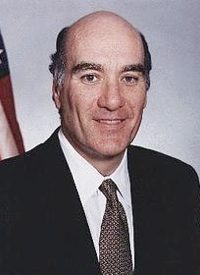
In late October White House Chief of Staff William Daley (left) ordered a complete review of all loan guarantees the Department of Energy has made to various energy projects. The review “is a tacit acknowledgement that the loan program [that supported the now-bankrupt energy company Solyndra]…has raised enough internal concern that an outside assessment is necessary…”, according the Washington Post.
While the review is supposed to take 60 days and will no doubt be an attempt to whitewash failed efforts by the government to jumpstart the economy through its support of the green industry, a look at past efforts is more than sufficient to conclude that such “investments” are more properly labeled “boondoggles” and an enormous waste of taxpayer money.
The spin on the review is already in. When Daley named Herbert Allison, a former assistant Treasury secretary, to head it up, he said:
The president is committed to investing in clean energy because he understands that the jobs developing and manufacturing those technologies will either be created here or in other countries. And while we continue to take steps to make sure the United States remains competitive in the 21st century energy economy, we must also ensure that we are strong stewards of taxpayer dollars.
Two fundamental questions were raised about government “investing” in energy by Washington Post writer Steven Mufson:
What does Washington have to show for these investments?
And should the government even be in the business of promoting particular energy technologies?
The Cato Institute’s study of energy projects gives the answer to the first question by listing many of the most notorious, and expensive, failed efforts by the government in the past to create viable energy projects, including Yucca Mountain, the Clinch River Breeder Reactor, the National Ignition Facility, the nuclear weapons sites cleanup (Idaho National Laboratory, the Hanford Site, Brookhaven National Laboratory, Rocky Flats Plant, and Savannah River Site), the Superconducting Super Collider project, the Synthetic Fuels Corporation, various “clean coal” projects, FutureGen, and alternative fuel vehicles.
Two of the most egregious examples are Clinch River and Synthetic Fuels. Originally conceived under the Nixon administration in 1971 and promoted as sort of perpetual motion machine, the Clinch River Breeder Reactor was initially estimated to cost $400 million with about half coming from private utilities and the balance from the Atomic Energy Commission (now the Department of Energy). Within one year of approval by Congress the cost had escalated to $700 million. As cost overruns, corruption and fraud mounted, so did the price tag. The Carter administration opposed it without success, and the Reagan Administration breathed new life, and funding, into the project partly in deference to then-Senate Majority Leader Howard Baker (R-TN) who strongly supported the project, located in his state just outside Oak Ridge, Tennessee. By 1983, however, following investigations of fraud and revised estimates to complete the project running into the billions, the Senate finally pulled the plug on the project. Today the 1300-acre site remains empty, and the taxpayers are out an estimated $8 billion.
It was under the Carter administration that the Synthetic Fuels Corporation got its start, with the president calling it the “keystone” of the country’s energy policy, designed to turn coal and shale into oil and gas. Carter set a goal of producing 2 million barrels of “synfuels” a day by 1990. It was a gargantuan project even by today’s standards, some $88 billion to be invested in various projects to generate the liquid fuels. But it ran into two realities: corruption, and rapidly declining oil prices on the world market which made the project even less viable economically. By the time it was shut down in 1985 taxpayers were on the hook for another $4 billion.
As noted by the Cato Institute:
The private sector is entirely capable of performing research into coal, nuclear, solar, and alternative energy sources for itself. Businesses will fund new technologies when there is a reasonable chance of commercial success, as they do in every other private industry. Federal subsidies may even be actively damaging to our energy future by steering markets in the wrong direction, away from the best long-term energy solutions
The answer to Mufson’s first question, What does Washington have to show for these investments? is clear: almost nothing except wasted energy, wasted taxpayer dollars, and misdirected resources.
The answer to Mufson’s second question, Should the government even be in the business of promoting particular energy technologies? should be equally clear. In the Constitution’s enumerated powers clause (Section 1, Article 8) there is no provision given any branch of the federal government to “invest” one single dime of taxpayers’ money into any of these failed ventures. Let’s call them what they are: unconstitutional, unimaginably wasteful, and designed to promote more federal government interference in the economy.



